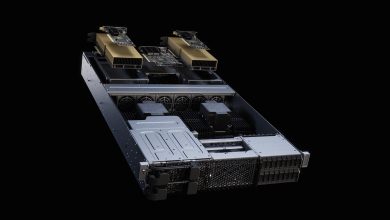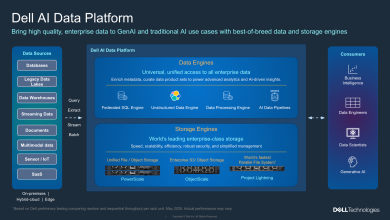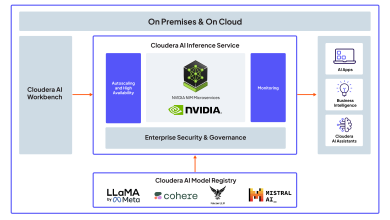AI Is Redefining Tech Infrastructure Priorities: Seagate Report Calls for Balance Between Cost and Carbon
Seagate’s latest global report urges the data centre industry to pursue unified strategies that balance TCO efficiency with environmental sustainability amid growing AI workloads.

Seagate Technology Holdings plc (NASDAQ: STX), a leader in mass-capacity data storage, today released the “Decarbonizing Data”1 report, its latest global report based on a commissioned survey, highlighting the growing sustainability challenges facing data centre as enterprises scale to meet the demands of AI.
Goldman Sachs Research forecasts global power demand from data centre will increase by as much as 165% by 2030, compared with 2023. Seagate’s new report reveals that energy usage is now a top concern for 53.5% of business leaders. The rising data volumes, slowing power efficiency gains, and increasing AI adoption are putting pressure on organisations to manage carbon emissions, infrastructure expansion, and total cost of ownership (TCO) – all at once.
Key Findings:
- AI to spur a wave of demand for data storage: 5% of respondents reported increasing data storage needs, with 97% anticipating AI’s growth to further impact storage demand. In fact, Singapore was one of the top three markets after Australia and the US to state that there has been an increase for data storage services at their company (56.7% strongly agreed).
- Environmental impact vs. total cost of ownership: Nearly 95% of respondents globally – and 90% in Singapore – are concerned about environmental impact, but only 3.3% prioritise it in purchasing decisions. In Singapore, low environmental impact has negligible influence on Singaporean decisions related to data storage infrastructure or equipment purchase.
- Top barriers in driving sustainability at data centres globally: High energy consumption (53.5%), raw material requirements (49.5%), physical space constraints (45.5%), infrastructure costs (28.5%), and acquisition costs (27%). In Singapore, respondents cited physical space constraints (70%) as the most significant barrier – mirroring the concern around a lack of electricity sources (70%).
- Disconnect in life cycle management: 2% acknowledge the importance of extending the life cycle of storage equipment, but only 15.5% consider it a top purchasing factor. Meanwhile, Singapore saw a much lower number of 10% prioritising products that support a longer life cycle in their purchasing decisions – despite 93.4% acknowledging its importance.
“Data centres are under intense scrutiny – not only because they support modern AI workloads, but because they are becoming one of the most energy-intensive sectors of the digital economy,” said Jason Feist, senior vice president of cloud marketing, Seagate. “This calls for a fundamental shift in how we think about data infrastructure – not as a trade-off between cost and sustainability, but as an opportunity to optimise for both.”
As organisations expand their data capabilities, they face three options: improve efficiency within existing infrastructure, expand data centre footprint, or migrate workloads to the cloud. Each option involves trade-offs between cost, carbon, and control, indicating that total cost of ownership and sustainability can be compatible goals. Decisions on energy consumption, space utilisation, raw material use, and infrastructure investment now impact both business performance and environmental outcomes.
To support the industry in navigating this shift, the “Decarbonizing Data” report outlines three strategic pillars for building a more sustainable data future:
- Technological Innovation: Technological innovation remains a key driver of sustainable transformation. Advances in computational power, storage areal density, and energy-efficient technologies like liquid/immersion cooling and HVAC systems can significantly lower energy consumption and carbon emissions, effectively managing the growing demand profile. Seagate’s HAMR-based Mozaic 3+ platform, now in volume production, enables up to 3 times more capacity in the same footprint, reduces embodied carbon by over 70% per terabyte2, and lowers cost per terabyte by 25%3.
- Commitment to life cycle extension and circularity: Refurbishing, reusing, and maintaining storage equipment extends lifespan and reduces waste. Real-time environmental monitoring and transparent reporting can foster accountability across the data centre environment.
- Share accountability across the ecosystem: Achieving meaningful emissions reduction – across Scopes 1, 2, and 3 as outlined in the report– requires collaboration across the entire value chain, including vendors, suppliers, and cloud service providers.
“Sustainability cannot be solved in isolation. A holistic approach spanning infrastructure, life cycle management, and industry-wide accountability could ensure that the growth of AI and data centre operations does not come at the expense of the environment,” said Jason Feist.
To view the comprehensive survey results and analysis, download the full “Decarbonizing Data” report: https://www.seagate.com/resources/decarbonizing-data-report.




